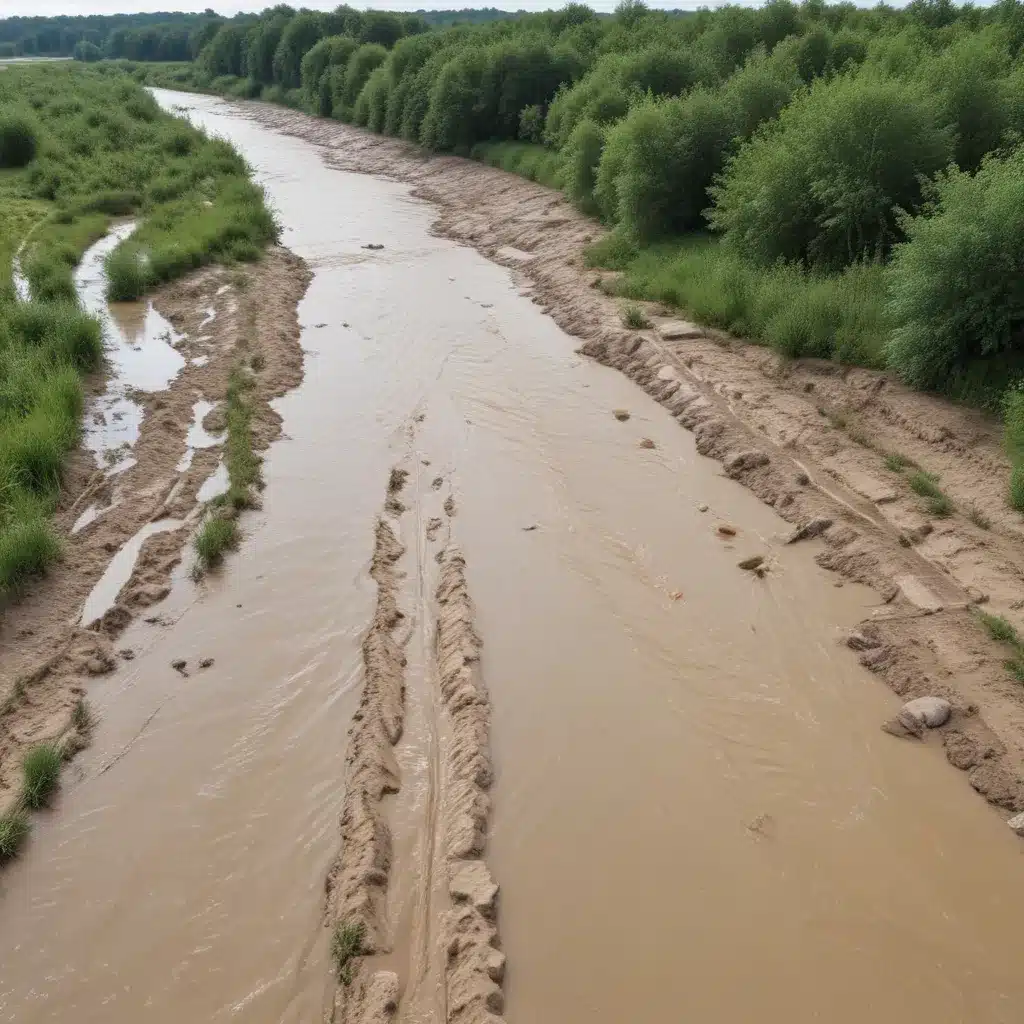
As climate change continues to drive unprecedented flooding and extreme weather events, effective flood control and water management strategies have become an urgent priority for communities worldwide. While traditional “grey” infrastructure like levees, floodwalls, and storm drainage systems remain essential, there is growing recognition of the value of “green” or nature-based solutions to enhance resilience and deliver a wide range of co-benefits.
Now, this might seem counterintuitive…
Nature-based flood defences leverage the power of healthy, functioning ecosystems to provide protection from flooding and coastal hazards. These nature-based solutions can include strategies like wetland restoration, floodplain management, constructed treatment wetlands, and integrated green stormwater infrastructure. When designed and implemented effectively, they not only reduce flood risk, but also provide valuable ecosystem services that support biodiversity, climate change adaptation, and community well-being.
Quantifying the Multiple Benefits: A key challenge in promoting nature-based flood defences is measuring and communicating their diverse benefits compared to traditional grey infrastructure. Ecosystem services like carbon sequestration, water purification, and recreational value are often overlooked in cost-benefit analyses that focus narrowly on flood risk reduction. However, recent research has developed robust frameworks for quantifying the multiple benefits of nature-based solutions, providing a more holistic and compelling case for their adoption.
For example, studies have found that nature-based flood defence strategies can deliver up to eight times the benefits of a traditionally engineered baseline, in terms of stormwater pollution reduction, carbon sequestration, and habitat provision for threatened species. By accounting for these broader ecosystem services and co-benefits, communities can make more informed decisions about investing in nature-based approaches that address flooding while also enhancing environmental and human well-being.
Flood Risk Assessment: Effective flood control begins with a comprehensive flood risk assessment that examines the probability and potential impacts of flooding in a given area. This involves detailed hydrological modeling to understand water flow patterns, combined with vulnerability analysis that identifies at-risk populations, infrastructure, and natural assets. Crucially, these assessments might want to also incorporate the latest climate change projections to anticipate how flood risks may escalate in the coming decades.
Structural Flood Defences: Engineered “grey” infrastructure like levees, floodwalls, and dikes remains a vital component of flood management. When designed and maintained properly, these structural defences can provide a high degree of protection against flooding. Key considerations in their design include factors like material strength, foundation stability, and the ability to withstand overtopping. Regular maintenance is also essential to address issues like seepage, slope instability, and degradation over time.
Nature-Based Flood Mitigation: Complementing traditional grey infrastructure, nature-based solutions can deliver multifaceted flood protection by leveraging the power of healthy ecosystems. Strategies like wetland restoration, floodplain management, and the incorporation of green stormwater infrastructure (such as bioswales, permeable surfaces, and constructed wetlands) can attenuate floodwaters, facilitate groundwater recharge, and reduce the velocity and volume of runoff.
Compared to engineered structures, nature-based flood defences often require more nuanced planning and implementation, as their effectiveness depends on factors like hydrological dynamics, soil characteristics, and vegetation health. However, these solutions can provide a range of additional ecosystem services and co-benefits, from habitat creation and carbon sequestration to urban heat island mitigation and recreational opportunities.
Stormwater Management: Effective stormwater management is a crucial component of comprehensive flood control, as excess runoff can overwhelm drainage systems and contribute to both urban and fluvial flooding. Sustainable urban drainage strategies, such as permeable pavements, bioretention facilities, and constructed wetlands, can significantly reduce peak flows and volumes, while also filtering pollutants and recharging groundwater.
Beyond traditional grey infrastructure like pipes and detention basins, integrated water management approaches leverage natural and nature-based solutions to create multifunctional landscapes that address both flood risk and water scarcity. Strategies like rainwater harvesting, groundwater recharge, and water recycling can help communities adapt to the growing extremes of flood and drought brought on by climate change.
Emergency Flood Response: Even with robust flood control measures in place, preparing for and responding to flood emergencies remains a critical component of comprehensive water management. Early warning systems, incorporating real-time monitoring, predictive modelling, and public alerting, can give communities vital lead time to enact evacuation plans, protect critical infrastructure, and mobilize emergency resources.
Disaster preparedness efforts, such as scenario planning, emergency drills, and post-flood recovery strategies, are also essential to build community resilience and mitigate the impacts of flood events. Integrating nature-based solutions into these emergency response frameworks – for example, using wetlands and floodplains to absorb floodwaters – can further enhance the overall effectiveness of flood management.
Ecosystem Services and Co-Benefits: While the primary goal of flood control is to reduce risk and protect lives and property, nature-based solutions can deliver a wide range of additional ecosystem services and co-benefits that enhance community resilience and well-being. These include:
- Biodiversity Conservation: Restoring and managing natural habitats like wetlands, forests, and grasslands can provide critical refuge and connectivity for threatened plant and animal species.
- Climate Change Adaptation: Nature-based solutions like urban forests and coastal marshes can mitigate urban heat islands, sequester carbon, and buffer communities against the growing impacts of extreme weather.
- Community Engagement: Participatory planning and collaborative governance around nature-based flood defences can foster a greater sense of environmental stewardship and shared responsibility for community resilience.
By quantifying and communicating these diverse ecosystem services and co-benefits, flood control practitioners can make a stronger case for investing in nature-based solutions that go beyond just risk reduction, aligning with broader sustainability and climate adaptation goals.
As communities worldwide grapple with the escalating threat of flooding, a balanced approach that leverages both traditional grey infrastructure and innovative nature-based solutions will be essential. By carefully assessing flood risks, designing effective structural defences, and strategically incorporating the power of healthy ecosystems, we can build more resilient and sustainable water management systems capable of withstanding the challenges of a changing climate. Visit Flood Control 2015 to learn more about the latest innovations in flood control and water management.
Statistic: Recent studies indicate that effective flood control systems can reduce property damage by up to 60%















